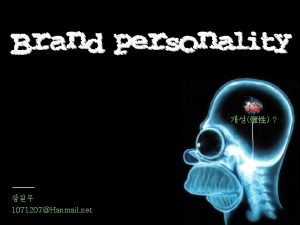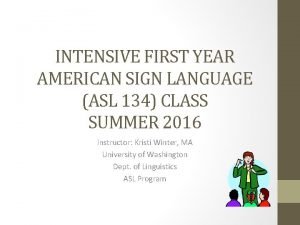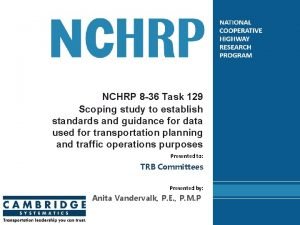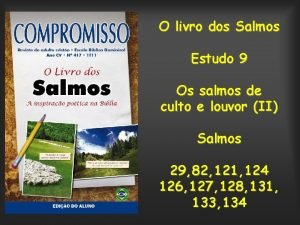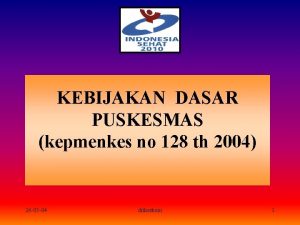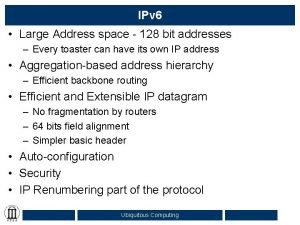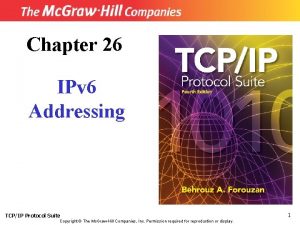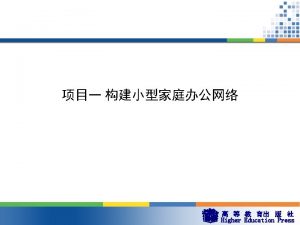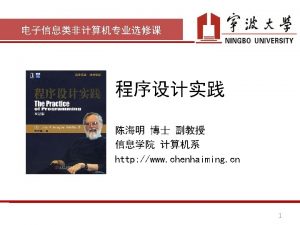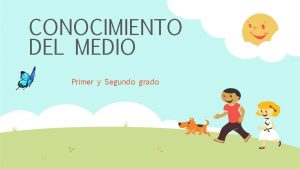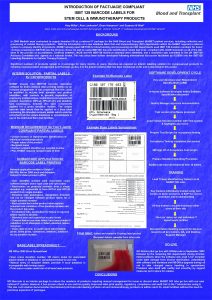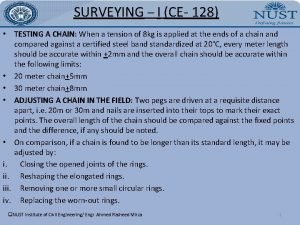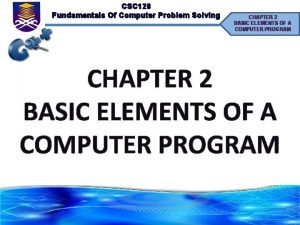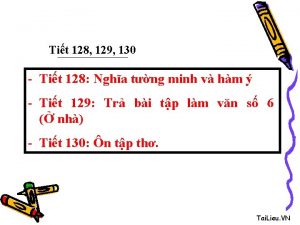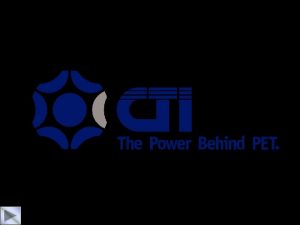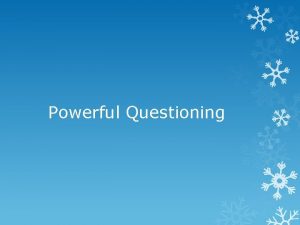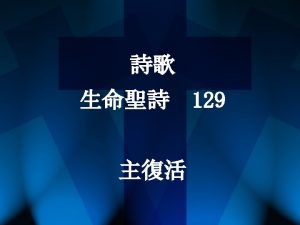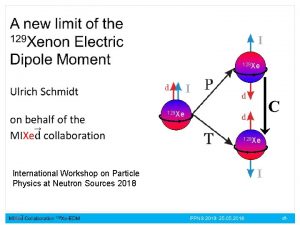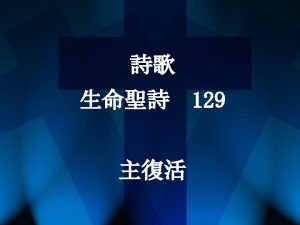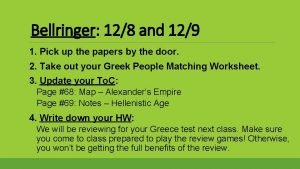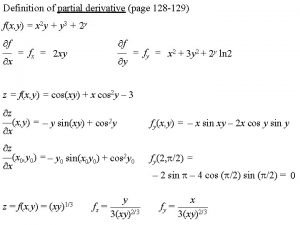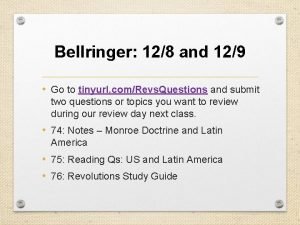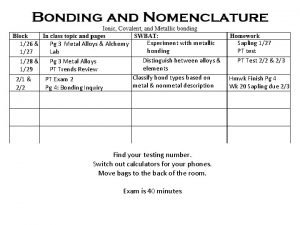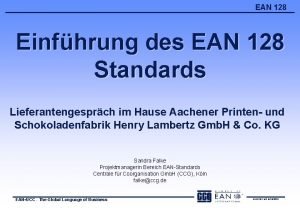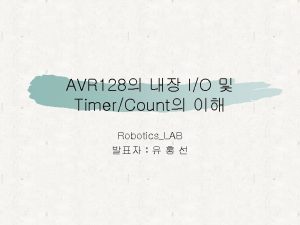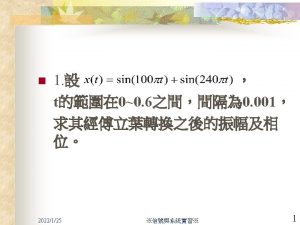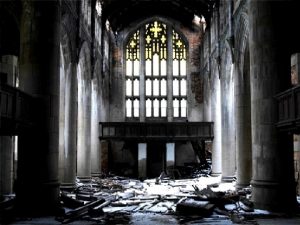DO NOW 128 129 1 Who is powerful

















- Slides: 17

DO NOW – 1/28 & 1/29 1. Who is powerful at the end of World War II? How do you know? 2. Who is weak at the end of World War II? How do you know? HW: Video Lesson 5. 1 – Start of the Cold War A Day: Finish Midterms (20 min) Do Now (5 min) Yalta & Potsdam Review: Preview to the Cold War (25 min) Atomic Bomb: Meant for Japan? (15 min) Table Talks: Power Post-WWII (15 min) Exit Ticket (5 min)

OUR GOALS SWBAT: Analyze the events of the Yalta Conference, Potsdam Conference, and the Atomic bomb dropping in order to determine how the Cold War started Essential Questions If the US and USSR were allies during World War II, what happened to start the Cold War? What is the Cold War?

YALTA & POTSDAM: IS THE TEMPERATURE DROPPING? • GOAL: What was the relationship between the leaders of the United States, Great Britain, and the USSR towards the end of World War II? • Task: Read the readings about the Yalta and Potsdam Conferences and look for evidence that determines whether or not the “temperature” was dropping or not between the Big Three. • Summary: How did the conferences lead to increased

QUOTE SANDWICH REVIEW INTRODUCE WITH A SIGNAL PHRASE: � INTEGRATE PART OF THE QUOTATION INTO YOUR COMPLETE SENTENCE. � According to Rohan Preston, “members often call out involuntarily to characters—responding to their queries and whims, offering advice and succor. ” Rohan Preston suggests that Bellamy actively engages audience members, who “often call out involuntarily to characters, ” which demonstrates Bellamy’s ability to look “deeply into theatregoers souls” (55). WRITE A COMPLETE SENTENCE STATING YOUR CLAIM OR OBSERVATION, and follow with a colon and the quotation. � Preston demonstrates that Director Lou Bellamy knows how to get the audience involved: “members often call out involuntarily to characters—responding to their queries and whims, offering advice and succor. ”

THE ATOMIC BOMB: MEANT FOR JAPAN? What does this cartoon mean? Who else could the Atomic bomb have been meant for? GOAL: Did the Atomic bomb increase tensions between the Big Three following Yalta & Potsdam? Task: Read the article about who the Atomic Bomb could have been meant for and complete your second thermometer.

Based on the Political Cartoons below and what we have learned today, what do you think the cold war was essentially about? Why do you think it is called the “Cold War”? 1. What is the Cold War? 2. How did the Cold War begin?

THE COLD WAR Period between 1945 and 1991 when the United States and the Soviet Union competed for power in almost every aspect, including ideological influence, economics, sports, technology, and military might, without directly engaging in “hot” warfare.

EXIT TICKET Create a complex sentence using an appositive which describes what the Cold War is and how it started. Put the two sentences you just wrote together: The Cold War, ________, started because… HW: Video Lesson 5. 1 – Start of the Cold War

TIMED TABLE TALKS Partner A: Respond to the question on the board Partner B: Either agree or disagree with Partner A & explain Partner C: Explain how either B or A illuminated the subject for you (i. e. , something you had not thought of before) OR illuminate your table (something new to the discussion) Partner D: Make a connection to something else we have talked about in this class (IR, Imperialism, WWI…) Each partner has 30 seconds to speak Rotate role cards after each question 1. How did the Yalta and Potsdam Conference pictures reflect the relationship of the Big Three? 2. Now that you know Truman may have been using the Atomic bomb to demonstrate the US’s military might to the USSR, do you agree with his decision to drop the bomb? 3. Based on this relationship, what will the Cold War be like? How will it be “fought”? 4. POWER ROUND: Predict what happens next, knowing the deteriorated state of many European countries, including Germany, Poland, and Eastern Europe. 5. POWER ROUND: How will the ideologies of communism and capitalism play a part in the Cold War?

VIDEO LESSON 5. 1 BRR, IT’S COLD IN HERE

INTRO TO THE COLD WAR What is a “Cold War”? � It is “cold” because there is no direct warfare; instead, the “fighting” takes place between countries who are competing for more power, but not directly attacking one another Two Sides: US and USSR � These two countries were both a part of the Allied Powers during WWII. � Uniting against a common enemy: The two sides both hated Hitler; therefore they would join forces for the time being.

AFTER WORLD WAR II The United States Economy recovered after the Great Depression; capitalism going strong Politically Stable High level of nationalism post-war The Soviet Union Strong ideals of communism throughout WWII Economy ruined by Germany’s destruction Main power in continental Europe in terms of military might & success in WWII

SOME KEY TERMS… USSR: Led by Premier Joseph Stalin USSR: Totalitarian Dictatorship *USSR is also known as the Soviet Union. Therefore, instead of being referred to as “Russians” during this time, the people of the USSR are known as “Soviets”. They are typically characterized by the color red US: Led by President Harry S. Truman US: Has a democracy

THE COLD WAR… The Cold War (1945 -91) was a war of perception where neither side fully understood the other. This led to mistrust. Each country strongly believed in their own ideology: COMMUNISM and CAPITALISM An ideology is a set of beliefs that forms the basis for political and economic practices � Communism: government controls the economy and wealth of a country; citizens are controlled by government and should work towards the benefit of the country as a whole � Capitalism: government and economy are controlled by citizens; its purpose is to guarantee rights & freedoms �

PERSPECTIVES OF COLD WAR United States Perspective � U. S. thought that Communism would spread. � Saw the USSR as a threat to their way of life (“capitalism”)

PERSPECTIVES OF COLD WAR Soviet Union Perspective � They felt that they had won World War II & wanted a Prize for winning: MORE LAND. � They wanted to control Eastern European Countries in order to acquire their wealth. � Eastern Europe = economically devastated; communism might appeal to them � They saw the U. S. as a threat to their way of life.

THE COLD WAR HEATS UP As the twentieth century progressed, the US and USSR competed in almost every aspect of society to be the most powerful Superpower, hoping to “win” more land, money, and political strength through better weapons (nukes) and more political influence – EACH WANTED THEIR IDEOLOGY TO DOMINATE THE GLOBE By 1991, almost the entire world will “pick teams” (whether voluntarily or not)
 Colorante e121
Colorante e121 300 - 129
300 - 129 Signing naturally homework 3:8
Signing naturally homework 3:8 Art 129 cst
Art 129 cst Ecs 129 uc davis
Ecs 129 uc davis Taskj-129
Taskj-129 Now i see it now you don't
Now i see it now you don't Quão bom e quão suave estudo
Quão bom e quão suave estudo Kepmenkes 128 tahun 2004
Kepmenkes 128 tahun 2004 128 bit address
128 bit address An address with 128 alternative 1s and 0s
An address with 128 alternative 1s and 0s 192 168 100 1
192 168 100 1 Char 0
Char 0 Contenidos de conocimiento del medio segundo grado
Contenidos de conocimiento del medio segundo grado Isbt 128 barcode
Isbt 128 barcode Ce 128
Ce 128 Csc 128
Csc 128 Mega128.h
Mega128.h

